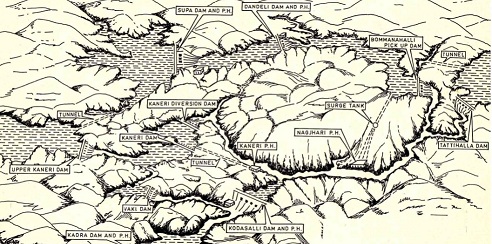
Some studies on the changes in the freshwater ecosystem during the impoundment of the Kali river (Karnataka state, India)
Abstract
Keywords
References
R.M. Baxter, P. Glaude. Environmental effects of dams and impoundments in Canada : Experience and prospects. Can. Bull. Fish Aqu. Sci., 1980, 205, 1–34.
B.R. Davies, K.F. Walker. The ecology of river systems, 1986 Dr Junk publishers.
G.E. Petts. Impounded rivers, perspectives for ecological management. 1984 John Wiley and Son, Chichester. Pp 326 + xvii.
K.F. Walker. Regulated streams in Australia: The Murray-Darling system. In The ecology of regulated streams 1979 (Eds. J V Ward and J A Stanford). Pp 143-163. Plenum, New York.
G.F. White. Environmental effects of complex river development. 1977, West view, Boulder, Colorado, USA : xi +172 pp.
M.S. Arcifa, C.G. Froehlich, S.M.F. Gianesella-Galvao. Limnology of ten reservoirs in Southern Brazil. Verh. Internat. Verein. Limnol. 1981, 21, 1048-1053.
T. Bhukaswan, S. Phoprasith. The fisheries of Ubolatna reservoir in the first ten years of impoundment. Proc. IPFC, 1977, 17(3), 195-205.
J.E. Bishop. Limnology of a small Malayan river, Sungai Gombak. Dr Junk publishers. 485 pp. 1973.
B.R. Davies. The Zambezi river system. In The ecology of river systems (Eds. B R Davies and K F Walker) 1986 pp. 225 – 267. Dr Junk publishers.
A.B.M. Egborge. The physical hydrology of the river Oshum, Nigeria. Arch. Hydrobiol., 1972, 70(1), 72-81.
J.I. Furtado. Limnological research and training in developing countries with reference to Malaysia. Proc. First workshop-promotion of limnology in developing countries (Kyoto), 1980, 53-56.
S.C. Ho. The physico-chemical limnology of the Ampang impounding reservoir, Kaula Lampur. Malayan Agri. Journal, 1976, 50(4), 527-544.
A.M.A. Imevbore. The chemistry of the river Niger in the Kainji reservoir area. Arch. Hydrobiol., 1970, 67(3), 412-431.
R.P. Lim. Limnological research and education with reference to natural ecosystems in Malaysia. Proc. 1st workshop-promotion of Limnology in developing countries (Kyoto) 1980, Pp 57-66.
T. Petr. The Purari - Tropical environment of high rainfall river basin. 1983, Dr Junk publishers. 608 pp.
J.A. Thornton. Lake McIlwaine: The eutrophication and recovery of a tropical African (Zimbabwe) man-made lake. 1982 pp 1-264. Dr Junk publishers. Monographiae Biologicae 49.
S.V. Ganapati, A. Sreenivasan. Aspects of limno-biology, primary production and fisheries in the Stanley reservoir, Madras state. Hydrobiologia, 1968, 32(3-4), 551-569.
A. Sreenivasan. Limnology of tropical impoundments. Part I: Hydrological features and fish production in Stanley reservoir, Mettur dam. Int. Revue ges. Hydrobiol. 1966, 51(2), 295-306.
S.V. Kamat. Gazetteer of India: Karnataka state, North Kanara district. 1985, Government publication. pp. 1100 + xvi.
V.S. Upadhyaya. Geological and geophysical investigations at Supa dam site, KHEP, NK. Dissertation submitted for M.Tech degree in Applied geology. 1971, University of Roorkee (UP), India.
M. Bombowna, H. Bucka, W. Huck. Impoundment and their influence on the rivers studied by bioassays. Verh. Internat. Verein. Limnol. 1978, 20, 1629-1633.
R.M. Baxter. Environmental effects of reservoirs. In Microbial processes in reservoirs (Ed. D Gunnison), 1985 pp. 1-26.
W.M. Lewis Jr. Primary production in the plankton community of a tropical lake. Ecol. Monogr., 1974, 44, 377-409.
A. Sreenivasan. Limnology of tropical impoundments: A comparative study of the major reservoirs in Madras state, India. Hydrobiologia, 1970, 36(3/4), 443-469.
A. Sreenivasan. Primary production and fish yield in a tropical impoundment, Stanley reservoir, Mettur dam, Madras state, South India. Proc. Natl. Inst. Sci. India B 1967, 35(2), 125-130.
ISSN 2347 – 8853
Indexed in:
 ISSN 2347 – 8853
ISSN 2347 – 8853  Â
Â